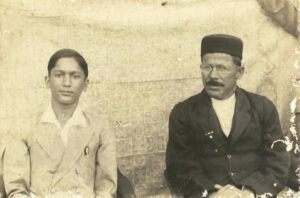The Himalayan tahr

Staff Reporter
The Himalayan tahr (Hemitragus jemlahicus) is a large even-toed ungulate native to the Himalayas in southern Tibet, northern Pakistan, northern India and Nepal.
It is listed as Near Threatened on the IUCN Red List, as the population is declining due to hunting and habitat loss. A recent phylogenetic analysis indicates that the genus Hemitragus is monospecific, and that the Himalayan tahr is a wild goat. The Himalayan tahr has been introduced to Argentina, New Zealand, South Africa and the United States.
The Himalayan tahr has a small head, small pointed ears, large eyes, and horns that vary between males and females. Their horns reach a maximum length of 46 centimetres (18 in). Himalayan tahrs are sexually dimorphic, with females being smaller in weight and in size and having smaller horns. The horn is curved backwards, preventing injury during mating season when head butting is a common mating ritual among males. The average male tahr usually weighs around 73 kg (161 lb), with females averaging 36 kg (79 lb) and is shorter in height than in length The exterior of a tahr is well adapted to the harsh climate of the Himalayans. They sport thick, reddish wool coats and thick undercoats, indicative of the conditions of their habitat. Their coats thin with the end of winter and becomes lighter in color. This shedding is presumably an adaptation that allows their internal body temperatures to adjust to the harsh temperatures of the Himalayan Mountains.
As a member of the ungulate group of mammals, the Himalayan tahr possesses an even number of toes. They have adapted the unique ability to grasp both smooth and rough surfaces that are typical of the mountainous terrain on which they reside. This useful characteristic also helps their mobility. The hooves of the tahr have a rubber-like core which allows for gripping smooth rocks while keratin at the rim of their hooves allow increased hoof durability, which is important for traversing the rocky ground. This adaptation allows for confident and swift maneuvering of the terrain. The lifespan of a Himalayan tahr typically ranges around 14 or 15 years, with females living longer than males. The oldest known Himalayan tahr lived to 22 years old in captivity.


Text Curtsy – Wikipedia
Photographs – Dr. J.P. Mehta








